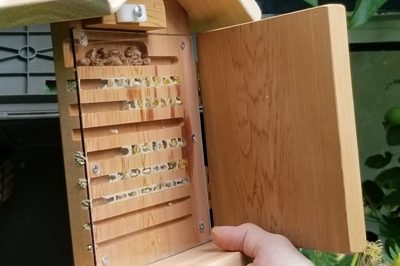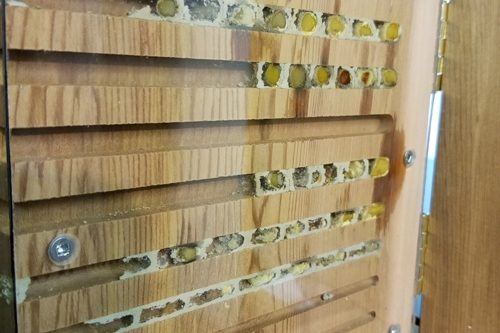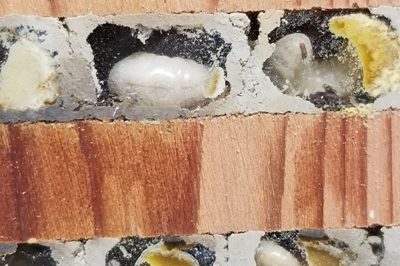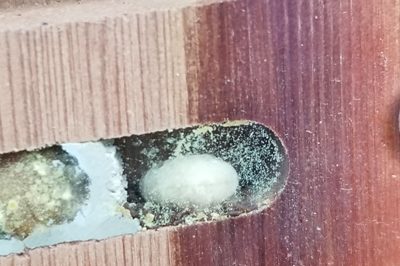It is late June and adult mason bees have completed their work. They have tirelessly pollinated, collecting pollen and nectar and laying eggs. Now that the adult bees are spent and are no longer around, it is time for the little ones to do their thing!
Eggs are laid on a pollen lump enclosed in a cell of mud. The mud is there to protect them from marauders such as little parasitic wasps and ants for example. The amount of pollen and nectar depends on whether it is female or male egg. Females receive a large pollen lump. Males are provided with considerable smaller pollen lump. Eggs soon appear as little grubs. All they do is eat and eat and eat. When all the pollen is devoured, the resultant bee grub is large and round. When fecal pellets are produced, it is close to the final larval stage. Fecal pellets are brown and slightly curved. At this last stage of this grub (called a pre-pupa) it starts spinning a cocoon. The silken threads produced by the salivary glands, spin a cocoon which in its final stages is brown and ovoid in shape. At the front end of the cocoon is a nipple which usually faces the nest entrance. During the summer there is a dormant stage which can last up to 2 months. By the end of the summer it becomes a pupa. This pupa starts of as white, but over the next few days, its eyes darken and it eventually turns into an adult mason bee. At this stage, bees go through a winter dormancy, at which stage, we can clean cocoons free of mites and other debris.
Watch the slide show and learn the different stages of a young mason bee from egg to a large spinning larvae. The next stage is the pupae and adult.








